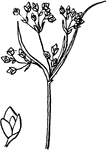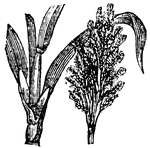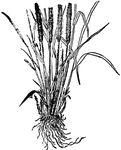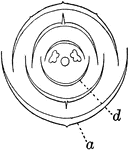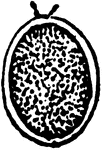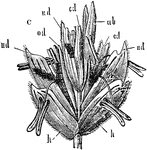The Grasses and Grains ClipArt gallery offers 423 illustrations of various types of grasses and grains, many of which are grown agriculturally for consumer use.
All illustrations in the ClipArt ETC collection are line drawings. If you are looking for color photographs of grasses, please visit the ClipPix ETC website.

Seed of Grain of Rice
Section of a grain of Rice, lengthwise, showing embryo outside the albumen, which forms the principal…

Water Rice
"Rice is a well known genus of grasses, having panicles of one-flowered spike-lets, with two very small…
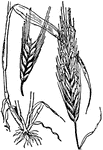
Rye
An import cereal plant. It is native to the Levant but is cultivated extensively in temperate climates,…

Rye
A grass grown for its grain and forage. It is part of the wheat group and is closely related to barley…

Rye Grain
A species of grain of which there are several varieties It is an esculent grain bearing naked seeds…
Ryegrass Leaf with Sheath
Lolium perenne. A sheath, in botany is "the part of an expanded organ that is rolled around a stem or…
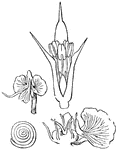
Prickly Saltwort
"3. a flower of Salsola Kali; 4. its ripe fruit; 5. the same magnified, with a portion of the leafy…

Sand Blue Grass
"Sand blue grass (Poa leckenbyi): a, empty glumes; b, spikelet, empty glumes removed; c, floret; d,…

Sand Grass
"Sand grass (Calamovilfa longifolia): a, spikelet; b, spikelet, empty glumes removed." -Department of…
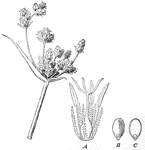
Sedge
"Inflorescence, flower, and seed, of a sedge. (Great Bulrush, Scirpus lacustris.) A, magnified flower,…

Shining Flatsedge
"Uricle or addiional glumes of Carex rivularis" (Shining Flatsedge) -Lindley, 1853
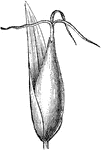
Sedge
An illustration of the female flower of the sedge plant. Carex is a genus of plants in the family Cyperaceae,…

Side Oats
"Side-oats (Atheropogon curtipendulus). a, spike; b, spikelet; c, spikelet with glumes removed." -Whitney,…

Gooseneck Sorghum
Gooseneck sorghum, a species of grass. The Gooseneck is the largest of the sorghum varieties. IT grows…
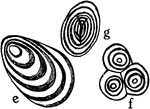
Starch Grain Striations
"Showing concentric and eccentric striations of starch grains. e, potato starch eccentrically striated;…

Sugar Cane
A genus of between 6-37 species of tall grasses, native to warm temperate to tropical regions of the…

Sugar Cane
Sugar Cane is probably a native to India, but is now extensively cultivated throughout the tropical…

Canada Thistle
Cirsium arvense is a species of Cirsium, native throughout Europe and northern Asia, and widely introduced…
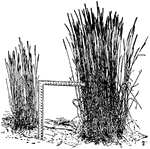
Pair of timothies
A pair of timothy plants growing side by side, illustrating the difference in yield. Each one grew from…
Vernal Grass
Spike-like panicle of vernal grass (Anthoxanthum). a: Mature anthers, slightly enlarged.

Vernal Grass
A spikelet with the outer glumes removed. c: Inner empty glumes (neuter flowers) with long,…
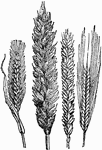
Wheat
An important and largely cultivated cereal. It is excelled by rice alone with reference to the number…
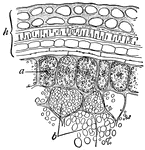
Wheat Grain
Outer portion of a cross-section of a wheat grain; h, various integuments of the ovary and seed, forming…

Wheat Grain
"A grain of wheat. Vertical section, showing (b) the endosperm, and (a) embryo." — Encyclopedia…

Wheat Grain
"A grain of wheat. Commencement of germination, showing (b) the pileola and (c) the secondary rootlets…
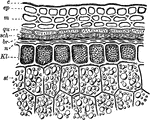
Wheat Grain
"Section through exterior part of a grain of wheat. c, cuticle or outer layer of bran; ep, epidermis;…

